Smuggle time: ‘there’s information from the Indonesia-East Timor border’
As Australian authorities scrambled to manage the growing political crisis over asylum boats, Amin Tagana’s phone was pinging with questions.
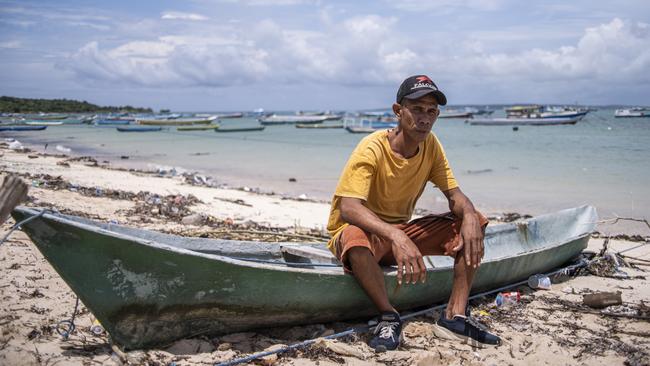
On Wednesday, as Australian authorities scrambled to manage the growing political crisis over asylum boats, Amin Tagana’s phone was pinging with questions from an old smuggler contact.
“There’s info from the border,” the Indonesian fisherman and seaweed farmer had written that day to an agent he had known for years.
“Can you enter Australia?” the contact had shot back within minutes. “Is it safe? Can you take animals?” the agent continued, using the dehumanising code for asylum-seekers common to people-smugglers.
News travels fast in Southeast Asia’s smuggler community, and the successful landing of a group of 39 mostly Pakistani and Bangladeshi men on Australia’s northwest coast last weekend is a bankable commodity to syndicates still scattered across the Indonesian archipelago.
There are plenty more takers where those 39 came from, Tagana claimed this week. He insists he is not a smuggler himself but maintains what some might consider an unhealthy interest in the trade. He points to a rash of recent attempted boat departures in his West Timor area alone as proof demand is on the rise.
Last December, eight Bangladeshi men were arrested in a village six hours from Tablolong, near the East Timor border, carrying fake Indonesian ID cards after travelling by boat from Malaysia. A few weeks earlier, a group of 12 asylum-seekers travelled from West Java to the Kimberly coastline where they were picked up by authorities and taken to Nauru.
It was the 10th asylum boat to arrive in Australian territory since the Albanese government was elected in May 2022, while several more were detained or turned back at sea.
Tagana insists a group of 25 more were intercepted that same month by the Indonesian coast guard as they were loading onto a vessel near Semau Island, a half-hour boat ride from Tablolong, though The Weekend Australian was unable to corroborate that incident.
Six months ago, three Bangladeshis, a Burmese man and an Indian were arrested in Kupang, the West Timor provincial capital less than an hour north of Tablolong, after crossing illegally from Malaysia as their smugglers searched for a boat to take them to Australia. “I’m very sure there are more in hiding,” Tagana tells The Weekend Australian when we meet at the impoverished village’s beach port facing southwest to Australia, though it’s clear he had nothing to do with the latest boat.
Tablolong, on the eastern tip of Indonesia’s East Nusa Tenggara province, is just a two-day boat trip to Western Australia’s remote Pender Bay where three groups of dehydrated men walked into the Aboriginal community of Beagle Bay within hours of each other on Friday, setting off fresh panic in Canberra.
It would be a straight-line trip south for the generational fishermen of that village who ply their trade in the warm, crocodile-infested waters of the Timor Sea, though Tagana insists no one from his village was involved – this time.
Official visits
Australian Defence Force chief Angus Campbell and Defence Minister Richard Marles have both made a beeline for Jakarta this week to beg for greater co-operation from the Indonesian military and Defence Minister Prabowo Subianto, the country’s presumptive next president after last week’s national elections.
Campbell, the former Coalition government’s Operation Sovereign Borders chief once tasked with stopping the boats, spent less than 24 hours on the ground on Tuesday to discuss “defence and security issues of mutual interest to Australia and Indonesia”.
Marles arrived in Jakarta late on Thursday and met Prabowo on Friday to discuss the two nations’ history of maritime security co-operation and continue negotiations on an elevated defence co-operation agreement, according to a statement issued before he left. For all the formal niceties, behind the scenes this week Indonesia-based officials acknowledged Australia was panicking and looking for help.
After meeting with Prabowo Friday afternoon, Mr Marles confirmed the two ministers discussed what more the two nations could do together to address the issue, but would not say whether Australia had offered financial assistance to increase Indonesia’s maritime security capacity.
Asked if Indonesian authorities were close to making any arrests or knew where the boat had left from Mr Marles said: “There is a high degree of visibility that both of our systems have about this and that is a function of the degree in which we’re cooperating together on intelligence and operationally.
“There is a very clear sense of what is happening here.”
Operation Sovereign Borders has amped up patrols after the most recent boat infiltrations led to revelations there had been a 20.7 per cent drop in aerial flying hours in 2022-23, and a 12 per cent drop in maritime patrol days.
OSB officials are working closely with Indonesian authorities to root out the smugglers responsible, though what’s making the government so nervous is it is the second boat to make it undetected past both nations’ patrols in the space of three months, and make it back to home harbour.
Where smugglers have previously been resigned to losing their boats to authorities, these ones have slipped through the net in both directions.
Since September, 62 asylum-seekers have been sent to Nauru, including 51 from those two boats that made it to Western Australia.
Whether Marles or Campbell came bearing gifts is not yet known, though in June 2022 Home Affairs Minister Clare O’Neil announced a $50m aid package for debt-stricken Sri Lanka to help its navy track and turn back boats after the interception of at least four asylum boats.
Smuggler past
Like so many in his village, Tagana has crewed an asylum boat in the past and is surprised the vessel made it to the mainland, though he scoffs at suggestions the modus operandi has changed.
The route and MO are “always changing, every day, every hour, every month”, he insists. “What influences the changes is police surveillance, and also intelligence from the community,” he says.
He believes the crew capitalised on the February 14 presidential, legislative and municipal polls across the country to slip undetected past Ashmore Reef.
“It was a perfect time for them because all the police and monitoring authorities would have been concentrating on elections last week,” he says.
The weather was also “pretty good”, he adds. Fishermen usually stay close to shore during traditional summer squalls that can bring swells of up to 4m.
“It was just luck they didn’t encounter patrols, so they went straight to Australia,” Tagana says. “The modus operandi is the same as it’s always been.”
Most seem to agree providence played more of a role in last weekend’s boat landing than any major operational changes by the smugglers – such as using a speed boat or advising passengers to stay hidden for several days to allow them to leave Australian waters.
Jeffrey Labowitz – a veteran International Organisation for Migration manager who now heads up the UN-affiliated group’s Indonesia operations – says it is too early to say whether it could be the start of a fresh wave of asylum boats.
“We have not seen a pronounced re-emergence of smuggling networks looking for departures to Australia,” Labowitz says. “We have seen several boat arrivals with Rohingya at the start of the sailing season from Cox’s Bazaar (in Bangladesh), but even those landings have abated and their intention was to stay in Indonesia or move on to Malaysia.”
So why now?
Indonesia has never been an easy place for refugees and the situation has only deteriorated in recent months amid a community backlash against Rohingya arrivals in Aceh province – once the only safe haven in Southeast Asia for the persecuted Myanmar Muslim minority.
As boat after boat of desperate families landed in the remote northern tip of Sumatra Island in the last weeks of 2023 – fleeing hunger, violence and trafficking in the lawless refugee camps of Cox’s Bazaar – local anger began to tip over into harassment and intimidation. Rohingya are no longer welcome in Aceh, just as they have been spurned across the region since 2015 when hundreds died at sea. Most asylum-seekers who land in Indonesia only ever intend to transit through on their way to somewhere else, though close to 10,000 of them are still stuck here after Australia slammed the door on sea arrivals in 2014 and began enforcing draconian policies aimed at stopping the boats.
Several local officials have suggested the latest boat arrivals could be first movers testing Australia’s High Court ruling last year against the indefinite detention of illegal migrants to see if that has weakened Canberra’s resolve, as opportunistic smugglers have tended to do with every change of government or policy.
Mohammad Reza, a stateless Hazara who has been stuck in Indonesian since he fled Iran in 2015 as a 17-year-old hoping to travel on to Australia, says no one he knows from the IOM-assisted refugee community is tempted to follow in their stead.
“There are rumours about this boat but people don’t know how many were on it or what happened to them,” the now 26-year-old says. “Australia has made it clear they don’t accept anyone who comes by boat. This is a kind of ruse by the smugglers. They’re trying to sell people that there are changes.
“Most people don’t want to put their lives in danger to go by boat. People have waited too long.”
Still, there is no shortage of regional push factors that might drive fresh waves of desperate refugees to Australia, notwithstanding its infamously hard line on boat arrivals.
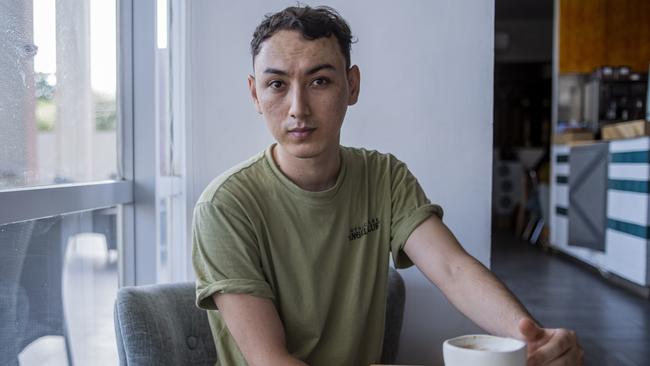
In Myanmar’s Rakhine state – from which more than 700,000 Rohingya fled military pogroms in 2017 – a new push by Burmese Buddhist insurgents fighting the Myanmar military junta has forced a mass exodus from the provincial capital of Sittwe.
Many residents have fled the city fearing it could be flattened in street-by-street fighting or deadly junta air raids. Those who can afford to have already gone to Yangon or Mandalay, the Irrawaddy news site reported this week.
But with food running low, and the military blockading the city, some are now looking to escape by sea. Across the border in Cox’s Bazaar, a million desperate refugees perched between violent camp militia and the Bay of Bengal are increasingly choosing the water.
Neither of those crises presents as rich a potential vein of opportunity for people-smugglers as 250,000 Bangladeshi, Burmese and Nepalese “excess migrant workers” in Malaysia caught in the country’s economic downturn, and a job scam syndicate that continues to lure thousands of Bangladeshis every month to the country.
Many have paid as much as $US5000 each to brokers promising Malaysian jobs that, on arrival, they find do not exist.
Migrant worker activist Andy Hall says there are “many hundred thousands like them (who) were deceived into paying exorbitant recruitment fees in Bangladesh for non-existent full time jobs in Malaysia” and who are now living in desperate circumstances across the country. “We have been engaging with the UN on this issue but it doesn’t seem that there’s any kind of positive movement by Malaysia so far,” Hall says.
The Bangladeshi government’s own figures show close to 330,000 workers migrated legally to Malaysia last year, and another 15,000 arrived in January this year notwithstanding the disaster unfolding over the past year.
The Malaysian government last month vowed to review the entire migrant worker program, including brokers’ fees and conditions, after admitting the country had more than 250,000 “excess migrant workers”.
More than 70 per cent of its foreign labour comes from Bangladesh, Nepal and Indonesia. Others come from India and Pakistan.
Of Malaysia’s 15 million strong workforce, some 2.2 million are legal migrant workers, though unofficial estimates suggest there are millions more undocumented migrant workers that have exacerbated rising anti-foreigner sentiment.
Authorities are once again rounding up illegal workers in raids that have forced many into hiding, or to consider seeking work elsewhere in the region.
Hall says it is not clear whether any of those stranded migrants have paid people-smugglers to cross into Indonesia and onto Australia.
Though of a quarter of a million destitute workers, the odds are some are desperate enough to try.
Malaysian immigration officials say they do not believe the men came via Malaysia, though objects found discarded on the beach where they landed suggest otherwise. Certainly the Malaysia route has long been a well-worn path for asylum-seekers given the historic ease with which they have been able to slip in and out of the country in their way to other destinations.
New routes?
East Nusa Tenggara Police crime investigation chief Patar Silalahi says he is concerned last weekend’s boat arrival in WA could reflect a growing sophistication in the capabilities of Indonesia’s people-smuggling syndicates.
“We need to look into this,” Silalahi says. “It could be a new modus operandi in which they are using more advanced equipment, because in the past they would get intercepted somewhere – either in Indonesia or in Australia – and never make it to the mainland.”
He concedes they still don’t know if Kupang was the exit point.
“There may be new routes; it could even be from Timor Leste,” he says.
“We used to have a people-smuggling unit but cases have dropped significantly thanks to strong law enforcement which has created a deterrent effect. We used to have great support for this but it is no longer an emergency like it used to be a decade ago.”
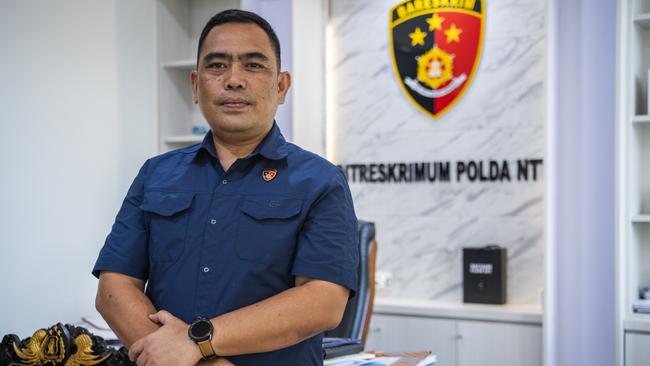
Water police, coast guard and navy continue to patrol the area, prioritising waters around Rote Island off the coast from Tablolong, but Silalahi admits there could be more co-ordination between them.
If the federal government was hoping for enlightenment from Jakarta this week it may have been disappointed, with senior bureaucrats admitting as late as Thursday they had not identified the boat’s departure point.
Rote, Tabolong, West and Central Java, Makassar, Malaka, Lombok: all have been infamous crossing points for Indonesian boats that a decade ago carried hundreds of people each week from South Asia, Africa and the Middle East hoping to reach Australia’s safe shores.
Successful enforcement on both sides of the Timor and Arafura seas has reduced that to a trickle, though it has never actually stopped, and West Java’s long coastline continues to be a favoured departure point to Christmas Island and Australia.
Where the fishermen of eastern Indonesia – accustomed to plying maritime border waters – have traditionally crewed the boats, West Java fishermen involved in the trade are used mostly to transport would-be asylum-seekers from the beach to a larger boat anchored off the coast, usually sourced from Jakarta’s main Tanjung Priok port.
One such fisherman, JK, says it is hard to resist such a lucrative payday, up to 15 million rupiah ($1500) for a night’s work.
“About three years ago, I often escorted foreigners into the middle of the ocean, where another boat would pick them up and take them to Australia,” JK says. “Each trip, I carried 10 to 25 people using a longline wooden boat.”
That work had largely dried up since 2021, though last November four Bangladeshi men were arrested as they were preparing to board a boat to Australia at Citepus, in West Java’s Sukabumi Regency.
Sukabumi Police Criminal Investigation Unit chief Ali Jupri says the foreigners were handed to immigration authorities, and the boat owner detained and charged.
Back in Tablolong, village head Zet Am Nggadas says he regrets its past reputation as a smuggling hub and had worked hard to educate the local fishermen of the risks involved in the illegal industry.
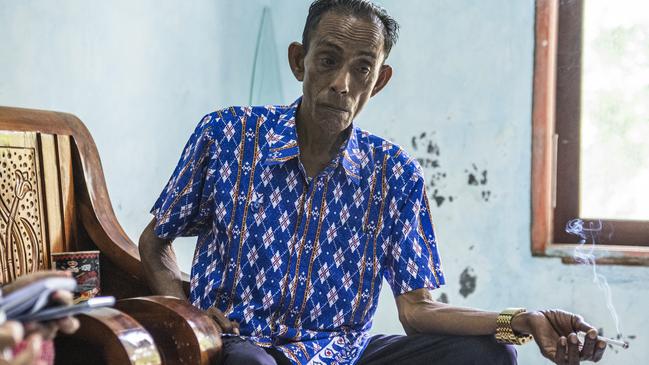
But the village is so strategically located – at the southern extreme of Kupang with waters protected by Semau Island – that it has always been a favoured crossing point to Australia.
“If there are still cases happening it’s probably because of its strategic location,” he says.
“It’s like drug smugglers. You only find out about it after they get caught. Usually they take advantage of times when people are busy, such as in the lead-up to Christmas.
“That’s when these immigrants are transported because people don’t pay too much attention. I’ve worked very hard to educate people here but you can’t know what people’s real intentions are. You can measure the depths of the ocean, but you cannot measure the depths of people’s hearts.”


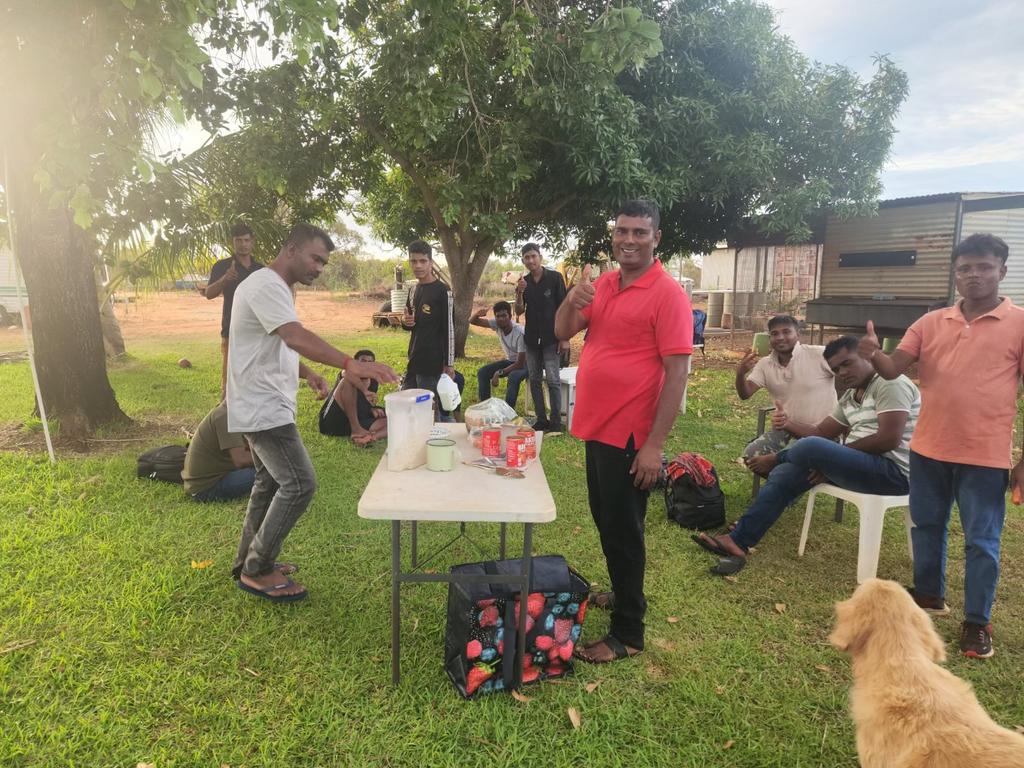
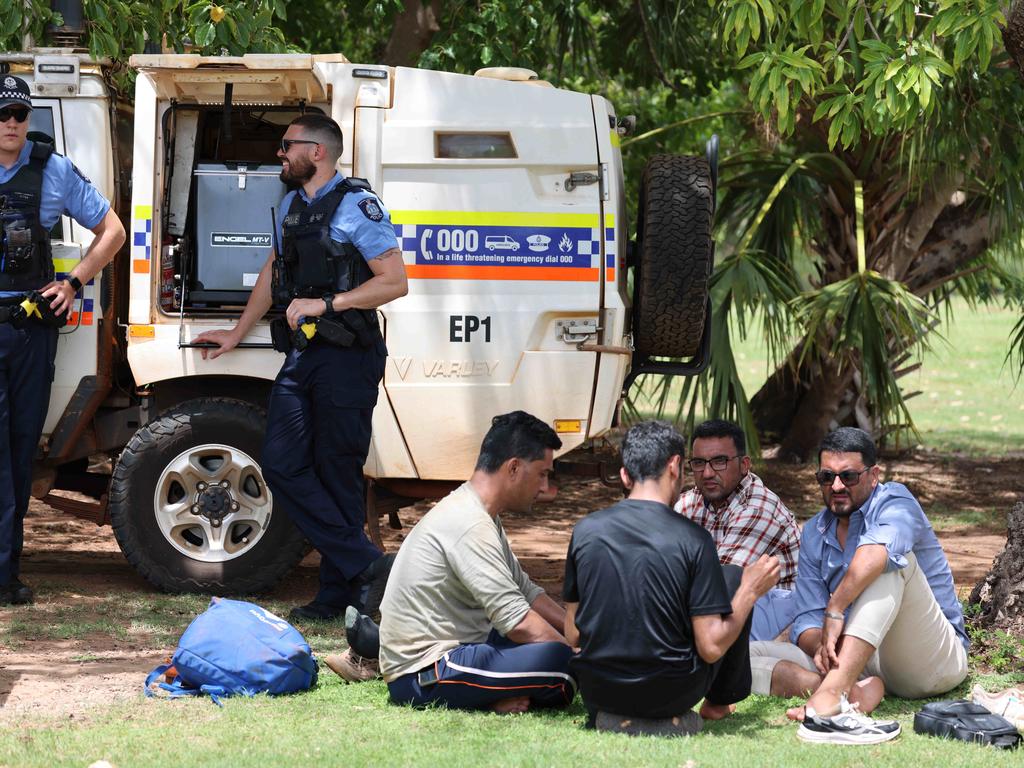


To join the conversation, please log in. Don't have an account? Register
Join the conversation, you are commenting as Logout